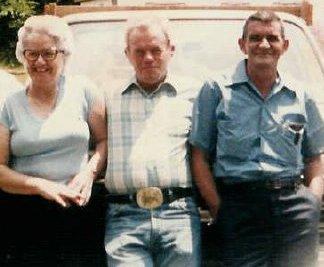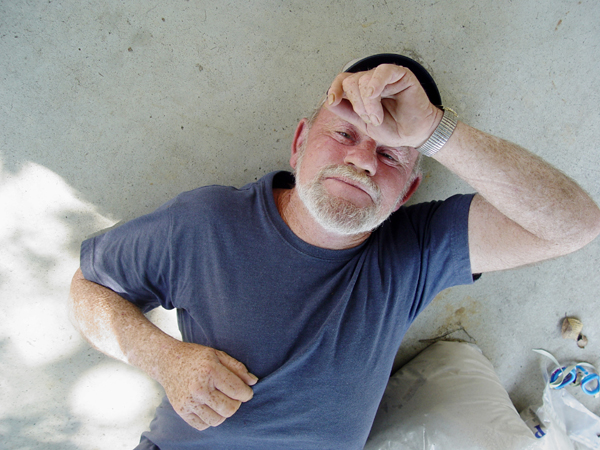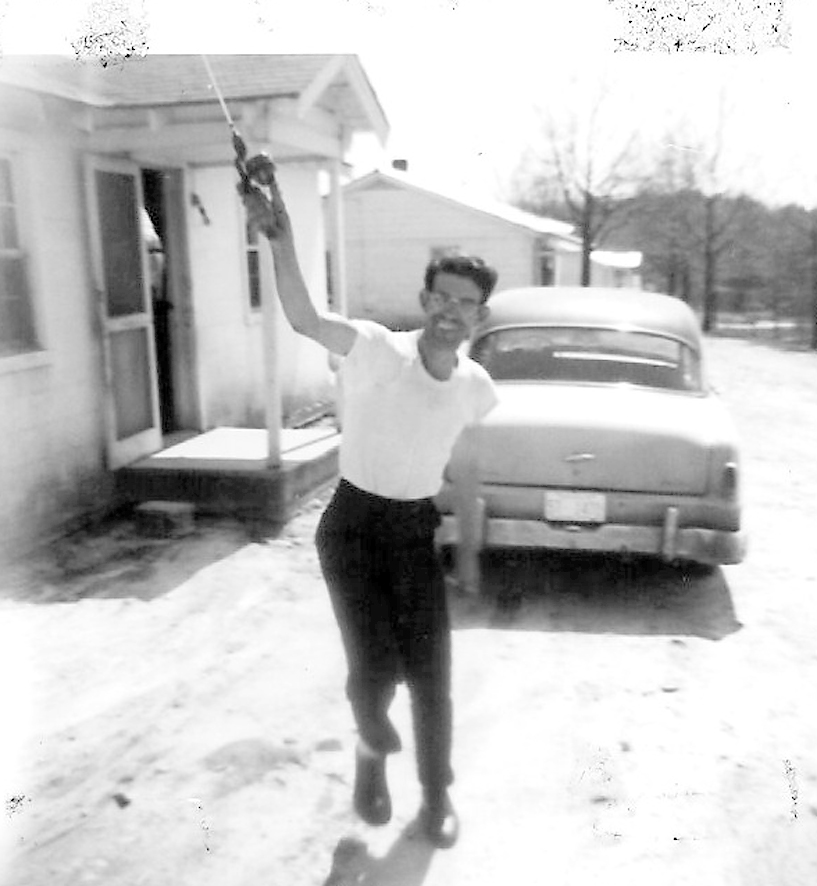
Three of the four children of Bob and Pearl are Gladys Hall Smith and her brothers Charles Edward Hall, Sr., and Robert Hall, all deceased. A fourth sibling is still living.
Robert Jasper Hall and Pearl Grace Buttrum had four children who lived:
1.Gladys Hall, my mother.
2. Robert “Bud” Hall was born.7 February 1933, on East Highland Mountain, now Bunch Mountain, east of Adairsville in Bartow County. He married a Fowler, still living, the daughter of George Fowler and Dellie Davis. Dellie was the sister of Rosa Alice Davis, who was Thiddo Smith's mother, which made Thiddo Smith and Gladys Hall double related.
Bud died 3 February1980 in a one-car accident a few days before his 57th birthday. He worked nights in Atlanta for the USPO as a mechanic, and lived in Adairsville. As I understand it, as he was exiting Georgia 400 on Highway 140, he ran the stop sign and hit the guard rail on the opposite side of the highway. Apparently he had fallen asleep.
They had six children, one deceased.
3. Charles Edward Hall, Sr. “Charlie” was born 8 February 1942 in Bartow County and died Wednesday, September 12, 2007 at 7:45 p.m. at Floyd Medical Center in Rome, Georgia, apparently the result of congestive heart failure brought on by a heat stroke. He was 65. Charles was a bridge welder for most of his life and worked out in the elements. He and his wife, still living, had six children, two of whom are deceased.
Charlie, like his sister Gladys, attended Pleasant Valley School in the first grade. It was a one-room school housing all 12 grades. The old school sat in the northwest quadrant at the crossroads formed by Pleasant Valley Road, Mosteller Mill Road, and Holcomb Road, between a small creek and Pleasant Valley Baptist Church. The Rev. Herman Bunch was the teacher. He was a relative, perhaps a brother, of “Uncle” Joe Bunch, who married Rosa Lee Buttrum, Pearl’s sister. The Rev. Bunch and his wife are buried in the Pleasant Valley Baptist Church Cemetery.
In those days children often missed school because of spring planting and especially fall harvest, so when Charles attended Adairsville School the next year, he was put back in the first grade. “It was usually Christmas before I attended school,” he said. He never attended school a full year. The truant officer once visited them and said, “Mr. Hall, those boys need to be in school.” Papa Hall replied, “Well, you get someone out her to pick my crop and I’ll send them to school.”
In the fall, Papa Hall would take his cotton to the Veach cotton gin in Adairsville. It usually took the first two bales to pay back Mr. Veach for the fertilizer, seed, and cow feed the family had needed since the last crop. With the third bale, Papa bought each of his boys a pair of brogan shoes, two pair of socks, two pair of overalls, two long-sleeve flannel shirts, two pair of long-handles, a red leather cap with ear flaps, a straw hat, a school tablet and a pencil. The pencil had to last until it was nothing but a nub.
The clothes served the kids well in the winter and spring, since the cloth thinned out after many washings. The shoes usually lasted until Easter, when Papa allowed the boys to go barefoot. “That was the highlight,” Charles said. “We waited for that.” If there was a warm day before Easter, Papa would still not allow them to go barefoot no matter how hard they begged. “It ain’t Easter yet,” he would say. But when Easter came, off came the shoes and the long-handles, unless it was a cold day. “We never would put them (shoes) back on until we started picking cotton,” Charles said.
The boys had to wear their long-handles every day in the winter, regardless of the temperature. “You’d get hot,” Charles said. “You’d just sweat. Papa said, ‘If you take them off, it’ll cause you to get a cold.' ”
The family raised five or six 1100-pound bales of cotton each year, all picked by hand, plus corn and hay. “It was hard work,” Charles said. “People talk about going back to the good ol’ days. I don’t think so.”
For a long time after he quit farming, Charles would not wear overalls, although he did “a time or two” in his later years. He wouldn’t eat oatmeal either because he ate so much of it as a child. “Some things you get tired of,” he said.
At Four Oaks, an old farm house belonging to the Veaches on Mosteller Mill Road north of Pleasant Valley Baptist Church, next to the cistern was a smoke house with a lean-to on the side. The lean-to protected firewood and meat was stored in the smoke house. The hams were “sugar-cured.”
“They would take 200 pounds of salt and a teaspoon of sugar and call it sugar-curing,” Charles laughed.
Charlie was the hardest-working person I have ever known. We worked together for a man named Mark Turner, the owner of Southeastern Empire Egg Company, in 1969. Mark, who was not a great businessman, had secured two contracts with Lockheed in Smyrna, one for hauling trash and another for disposing of the lumber from packing crates. Charles and I did the latter, breaking down crates as big as a room in a house (they were for C-5A wing sections). I could only try to keep pace with him, although one hot summer day, after a big lunch, we both fell asleep inside one of those partially disassembled crates.
When I was in the first grade at Adairsville School, in the old two-story brick building now torn down to make way for the new school, Charles, in the fifth grade, was in an adjacent room on the second floor. It must have been spring because the windows were open. Charles said he heard me get into an argument with my teacher, whose name I forget, over something I had written. I got frustrated with the teacher and yelled, “Ain’t you got eyes.” Charles said he thought I was going to get a paddling.
About 1978, Charles and I bought a 1953 three-quarter ton Chevy pickup. Charles had a 1956 Chevy pickup that had a blown engine, and I had a 1952 Chevy pickup that I was fixing up. We bought the old truck for about $300 as I recall. After we stripped the old truck, I remember telling him that it was probably the best truck of the three we had. He laughed, and agreed.
About the time Charles married, he was driving a Chevrolet automobile that had bad paint. He couldn’t afford to have it professionally painted, so he painted it himself – with cans of spray paint.
4. And one son, still living.
 | One of my favorite photos of Charlie. I don't know who took this photo. |
This candid of Charles was probably taken about 1962, when he was about 20. I don't know the photographer's name, but it could be his wife. |

This photo of Bud was made in June 1962. He was about 29 years old.
The author of this website and all affiliated websites is Marion T. Smith, son of Gladys and Thiddo Smith. Please send all additions, corrections, and inquiries to upmytree@inbox.com. Thanks.
Last updated 18 February 2012, and web counter added.